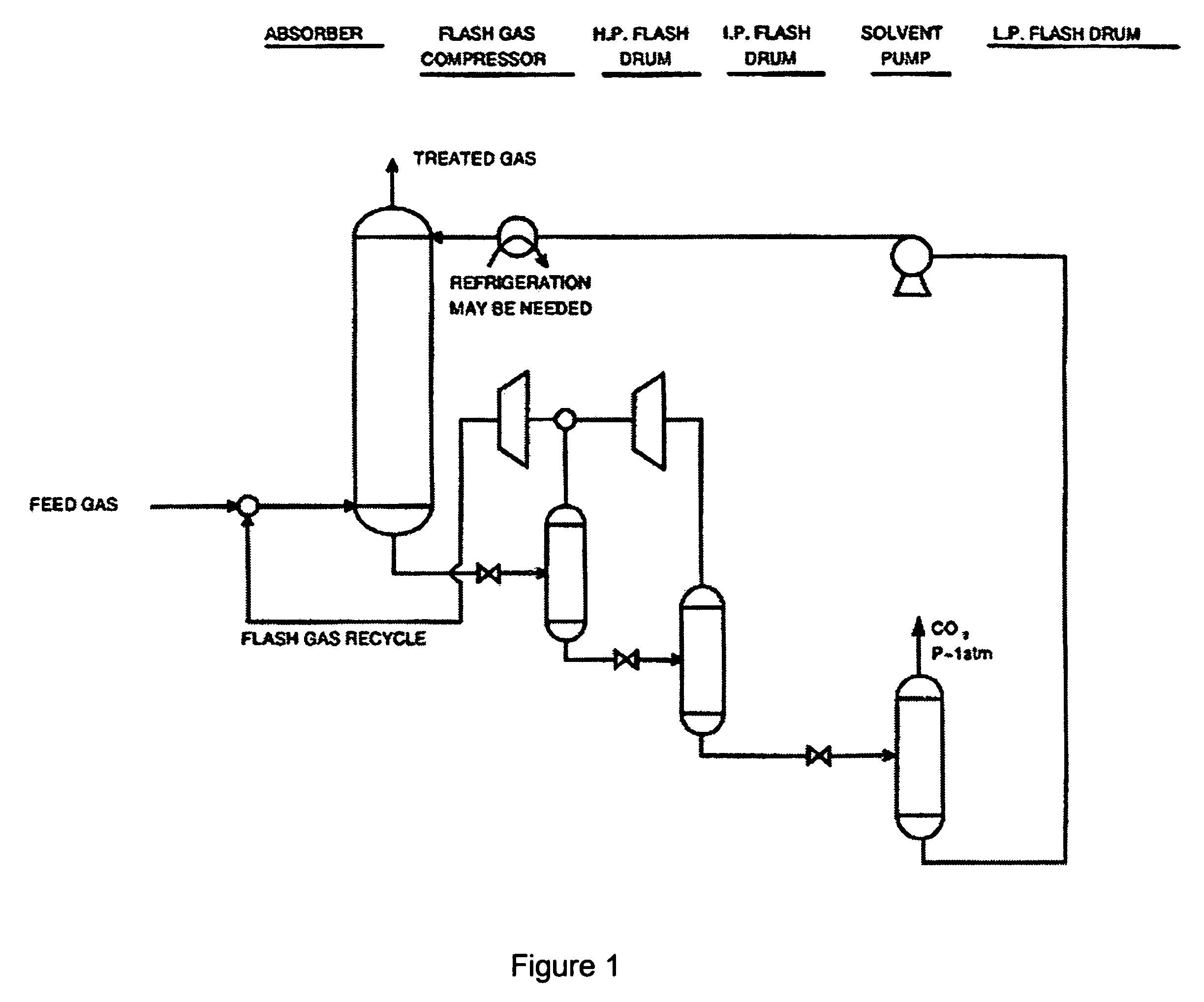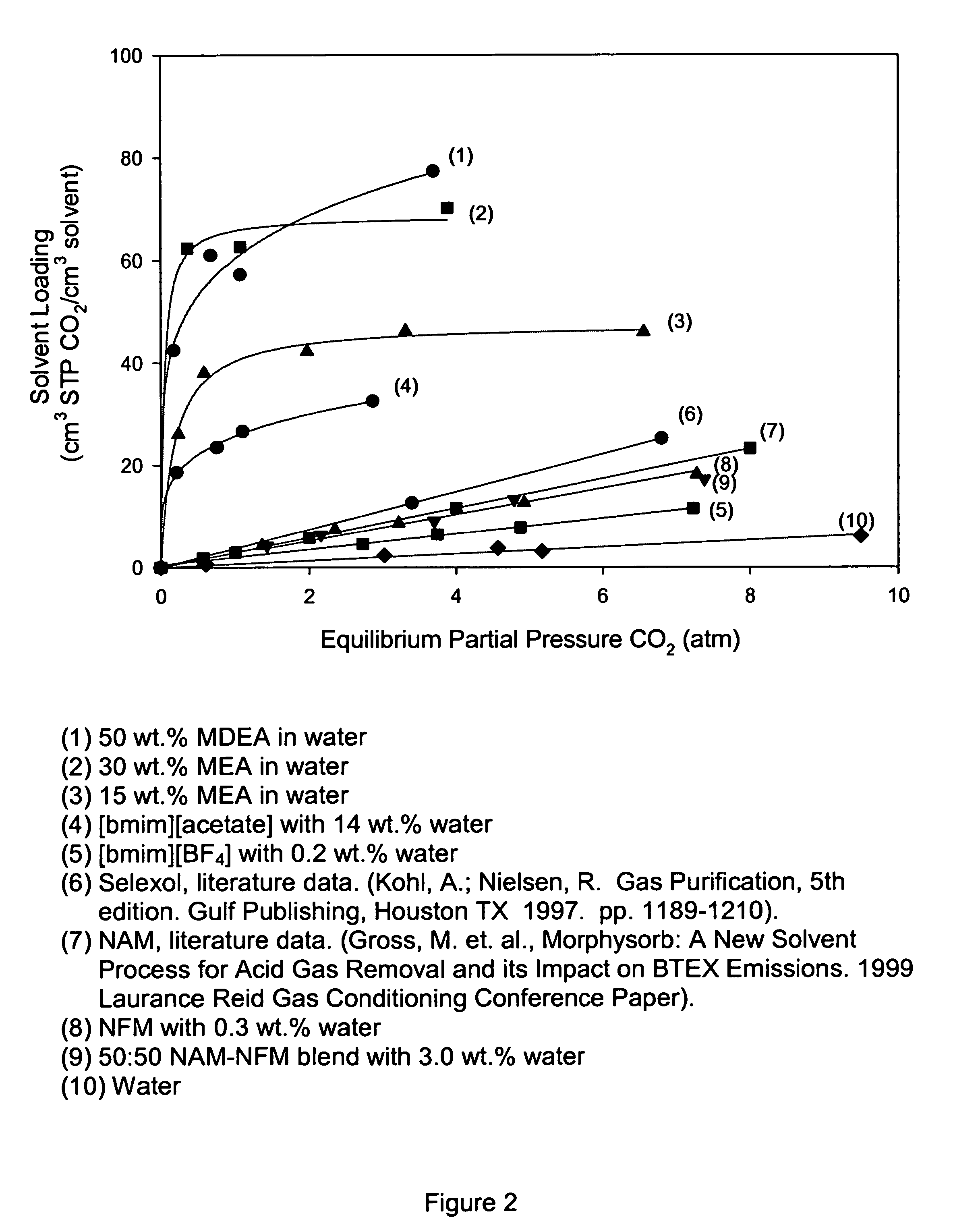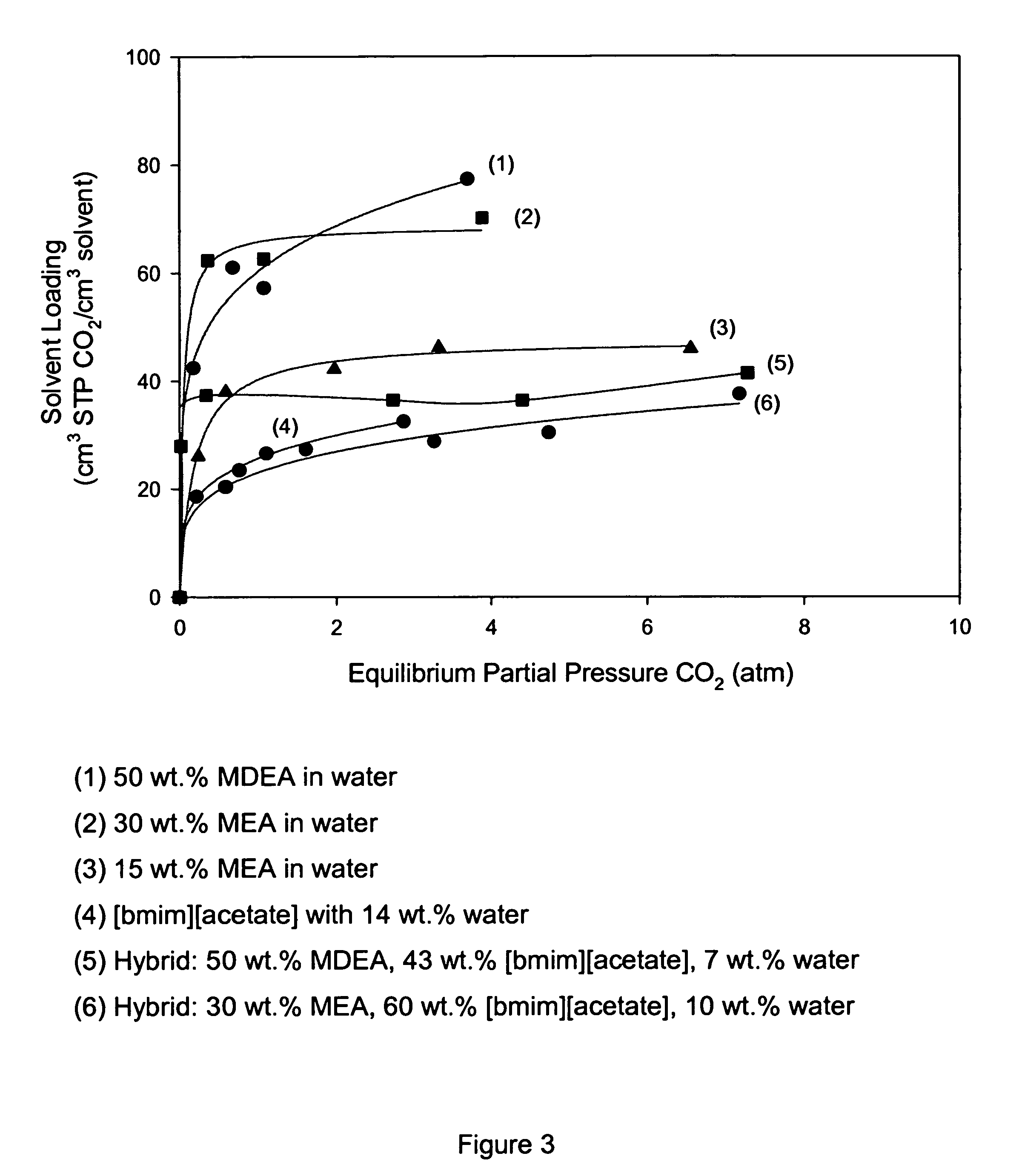CO2 removal from gas using ionic liquid absorbents
a technology of ionic liquid absorbent and gas, which is applied in the direction of gaseous fuels, hydrogen sulfides, separation processes, etc., can solve the problems of large operating expense, high energy requirement, and large capital expense of diluted concentration, and achieve low hydrocarbon solubility, low co-absorption, and high co2 capacity
- Summary
- Abstract
- Description
- Claims
- Application Information
AI Technical Summary
Benefits of technology
Problems solved by technology
Method used
Image
Examples
example 1
[0062]This example shows the procedures used for generating loading curves shown in FIG. 2. All of the ionic liquids ([bmim][acetate], [bmim][BF4]) and physical solvents (e.g., NAM, NFM) were used as-received. The water content for each solvent, as determined by Karl-Fischer titration, is summarized below:
[0063]
[bmim][acetate]:14.0wt. %H2O[bmim][BF4]:0.21wt. %H2ONAM:0.15wt. %H2ONFM:0.28wt. %H2O
[0064]The aqueous amine solvents were prepared by diluting the pure amine with the appropriate amount of water. The amine concentrations were chosen to match those that are commonly used in the gas processing and refining industries (50 wt. % MDEA, 30 wt. % MEA, etc.).
[0065]Gas sorption measurements were conducted with a static, volumetric method. A known mass (2 to 4 grams) of solvent was added to a clean, pressure vessel of known volume (˜25 cm3). The sample vessels are all equipped with a relief valve, inlet sampling plug valve, and a digital pressure gauge. After zeroin...
example 2
CO2 Loading Curves in Solvents
[0066]Gas loadings (cm3 STP / cm3 liquid) were calculated using the ideal gas law from the initial and equilibrium gas pressures, temperature, solvent volume, and vessel volume. The presence of air and water vapor in the gas phase must be accounted for when applying this method, especially for the high-temperature data.
[0067]FIG. 2 shows the room-temperature, pure CO2 loading curves for several solvents. CO2 loadings are reported on a volumetric basis (cm3 STP CO2 / cm3 solvent) to account for any differences in densities between the solvents. Several clear trends can be seen in the data.
[0068]The aqueous amines (1-3) all had the highest volumetric CO2 loadings over the entire pressure range, and have curves that rise steeply initially and then plateaus at higher pressures. This is characteristic of chemical absorption (“chemisorption”), which is expected because it is well-known that amine groups can reversibly bind CO2 either as a carbamate species (with ...
example 3
CO2 Loading Curves in “Hybrid” Ionic Liquids
[0071]Experiments were performed to investigate the effect of blending pure amines with [bmim][acetate]. FIG. 3 shows the room-temperature CO2 loading curves for the aqueous amines (1-3), [bmim][acetate] (4), and two different amine blends of [bmim][acetate] (5-6). The MDEA-[bmim][acetate] blend behaved similar to that of pure [bmim][acetate]. This is consistent with the notion that both MDEA and [bmim][acetate] bind CO2, in the presence of water, as a bicarbonate species. However, when the amine was changed from MDEA to MEA, we see that the blend has the highest observed CO2 loading curve among all ionic liquids. With MEA, CO2 is able to bind directly as a carbamate species at a 2:1 ratio of MEA:CO2. At higher partial pressures, CO2 can also bind as bicarbonate species under the influence of the [acetate] functionality. Because of these different mechanisms, the MEA-[bmim][acetate] loading curve has a peculiar shape. The aqueous amines (1...
PUM
| Property | Measurement | Unit |
|---|---|---|
| weight % | aaaaa | aaaaa |
| weight % | aaaaa | aaaaa |
| temperatures | aaaaa | aaaaa |
Abstract
Description
Claims
Application Information
 Login to View More
Login to View More - R&D
- Intellectual Property
- Life Sciences
- Materials
- Tech Scout
- Unparalleled Data Quality
- Higher Quality Content
- 60% Fewer Hallucinations
Browse by: Latest US Patents, China's latest patents, Technical Efficacy Thesaurus, Application Domain, Technology Topic, Popular Technical Reports.
© 2025 PatSnap. All rights reserved.Legal|Privacy policy|Modern Slavery Act Transparency Statement|Sitemap|About US| Contact US: help@patsnap.com



